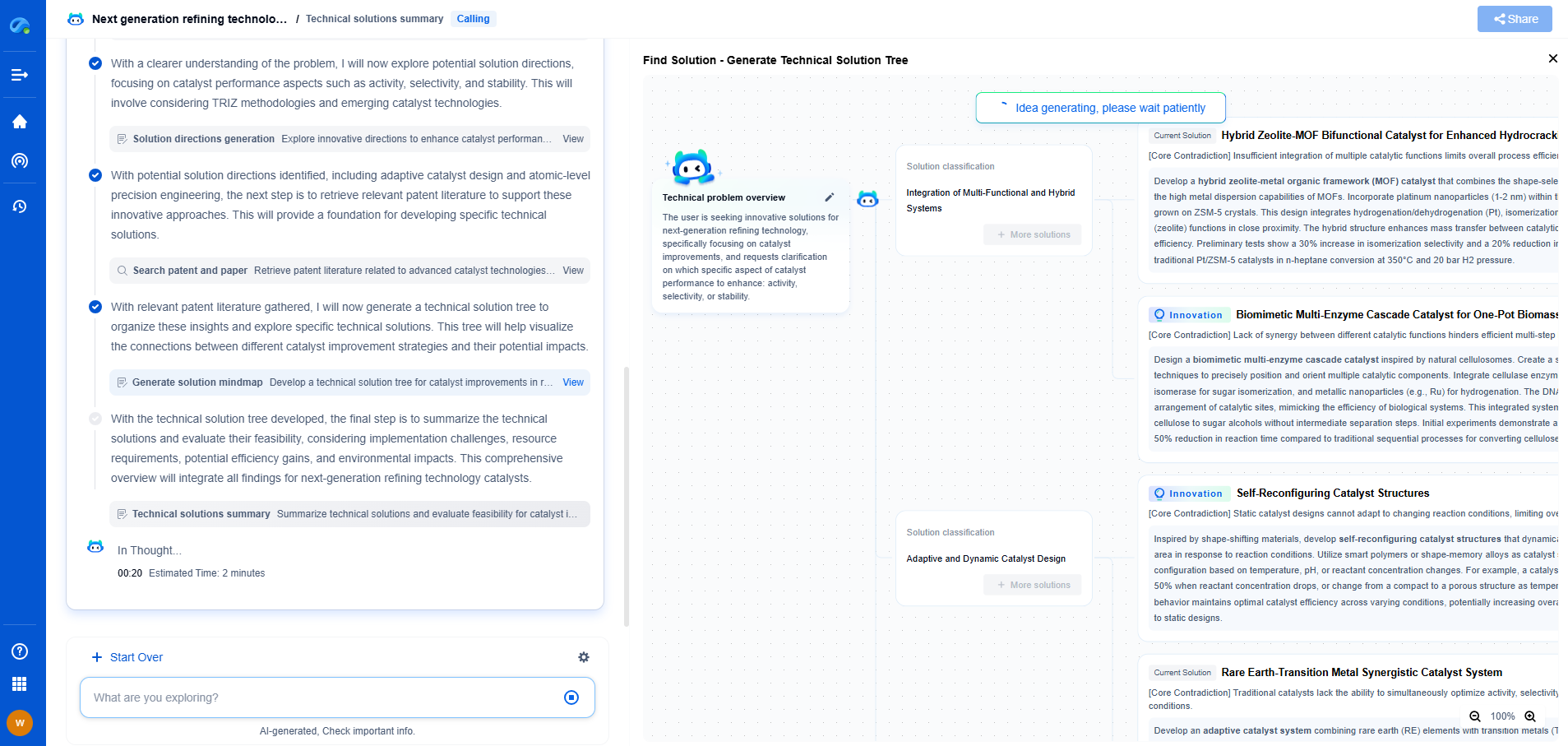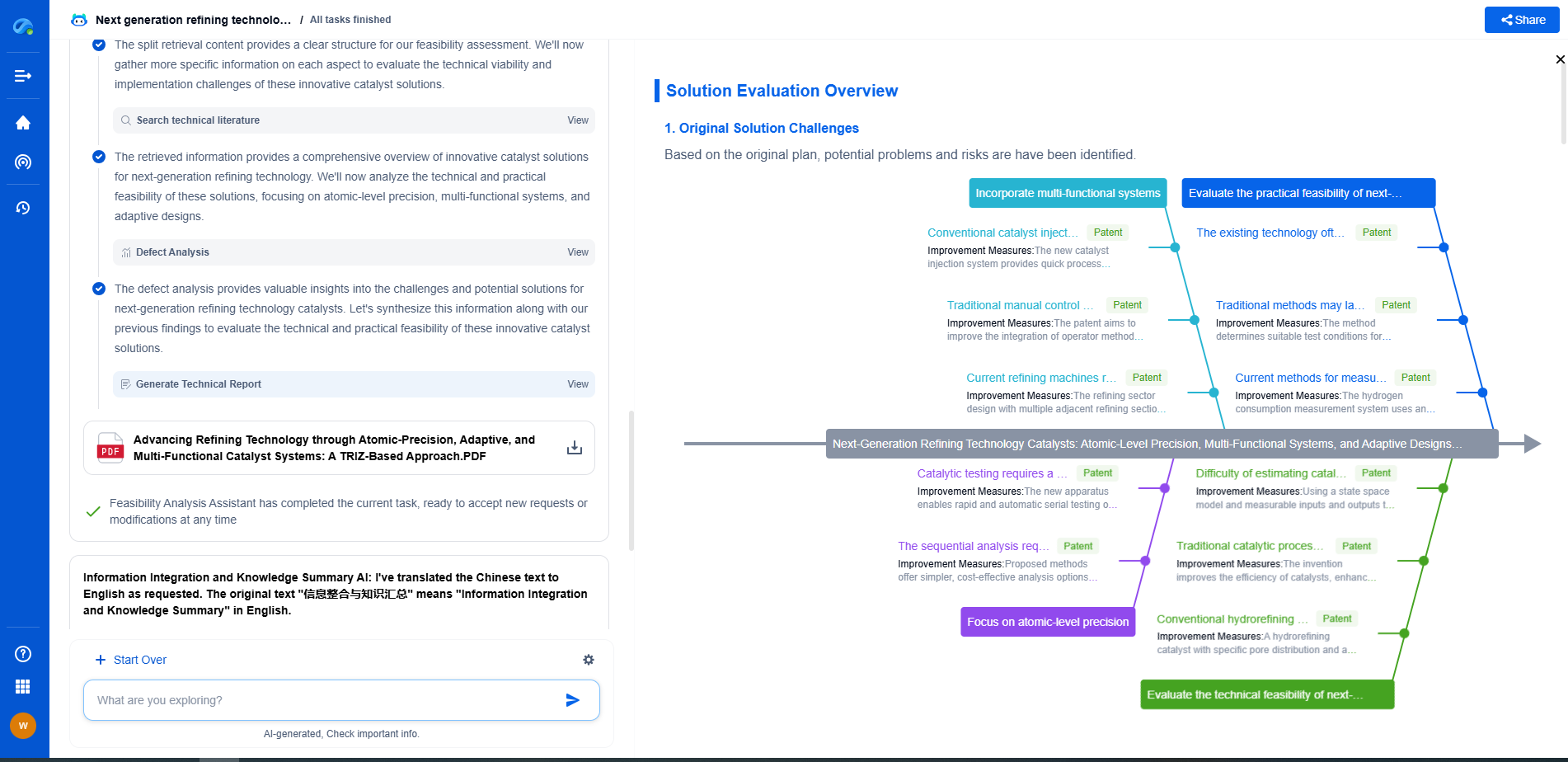Benchtop vs. Handheld LCR Meters: Portability vs. Precision Trade-offs
JUL 9, 2025 |
LCR meters are indispensable tools in the field of electronics, used to measure the inductance (L), capacitance (C), and resistance (R) of components. Choosing the right LCR meter can significantly impact the efficiency and accuracy of your measurements. The primary decision often boils down to selecting between benchtop and handheld models. Each type has its unique advantages and potential trade-offs, particularly in terms of portability and precision. This blog aims to delve into these differences, guiding you in making an informed choice.
Portability: The Handheld Advantage
Handheld LCR meters are celebrated for their portability. Compact and lightweight, these devices can be easily transported, making them ideal for fieldwork or environments where space is limited. The convenience of a handheld LCR meter is unmatched when technicians need to troubleshoot outside of the laboratory or workshop. Whether climbing up a ladder or reaching into tight spots, the handheld model offers flexibility that a benchtop model simply cannot.
Furthermore, many modern handheld LCR meters come equipped with battery power, eliminating the need for a constant power source. This feature is particularly beneficial for engineers and technicians who frequently work outdoors or in remote locations. In addition to portability, these meters often include a range of features such as data logging, Bluetooth connectivity, and rugged designs that can withstand harsh environments.
Precision: The Reign of Benchtop Meters
While handheld meters excel in portability, benchtop LCR meters are the champions of precision and accuracy. These devices are typically equipped with advanced measurement capabilities, higher resolution, and better stability over time. This makes them suitable for applications where measurement accuracy is paramount, such as in research and development laboratories or quality control settings.
Benchtop models often include wider frequency ranges and superior test functionalities, allowing for more comprehensive analysis of components. Their larger displays and more extensive user interfaces provide additional data visualization options, making it easier for users to interpret complex measurements. The ability to connect with other laboratory instruments and integrate into automated testing environments further enhances their value in precision-driven tasks.
Balancing the Trade-Offs
The choice between a benchtop and a handheld LCR meter ultimately hinges on the specific needs and priorities of the user. For those whose work primarily entails on-the-go testing and troubleshooting, the convenience of a handheld model might outweigh the need for the highest precision. Conversely, if the primary requirement is detailed analysis and the environment allows for a stationary setup, a benchtop meter’s precision could be indispensable.
Some professionals may find it beneficial to maintain both types of meters, utilizing each according to the task at hand. The handheld meter can serve well for initial assessments or fieldwork, while the benchtop meter can be reserved for in-depth investigations or when manufacturing standards require detailed reports.
Technological Convergence
It's also worth noting the technological advancements that are gradually narrowing the gap between these two categories. Handheld meters are increasingly integrating advanced features that were once exclusive to benchtop models, while benchtop meters are becoming more user-friendly and adaptable. Innovations in digital interfaces, connectivity, and software integration are making both types of LCR meters more versatile than ever before.
Conclusion
In the benchtop versus handheld LCR meter debate, there is no one-size-fits-all answer. Each type has its unique strengths and is suited to different applications. Evaluating your specific requirements in terms of portability, precision, and additional functionalities will guide you in selecting the most suitable device. As technology continues to evolve, the distinction between these two categories may blur, offering even more sophisticated solutions to meet the diverse needs of electronics professionals.
Navigating the evolving world of electrical measurement—from high-precision signal integrity to advanced test protocols like BERT or TDR—demands more than just expertise; it demands smart tools.
Patsnap Eureka empowers you to keep up—by turning complex patent data, technical parameters, and industry signals into actionable insight. It’s your AI partner for exploring what’s next in test, measurement, and electrical diagnostics.
💡 Try Patsnap Eureka for free and see how it transforms the way you work with electrical measurement technologies.
- R&D
- Intellectual Property
- Life Sciences
- Materials
- Tech Scout
- Unparalleled Data Quality
- Higher Quality Content
- 60% Fewer Hallucinations
Browse by: Latest US Patents, China's latest patents, Technical Efficacy Thesaurus, Application Domain, Technology Topic, Popular Technical Reports.
© 2025 PatSnap. All rights reserved.Legal|Privacy policy|Modern Slavery Act Transparency Statement|Sitemap|About US| Contact US: help@patsnap.com

